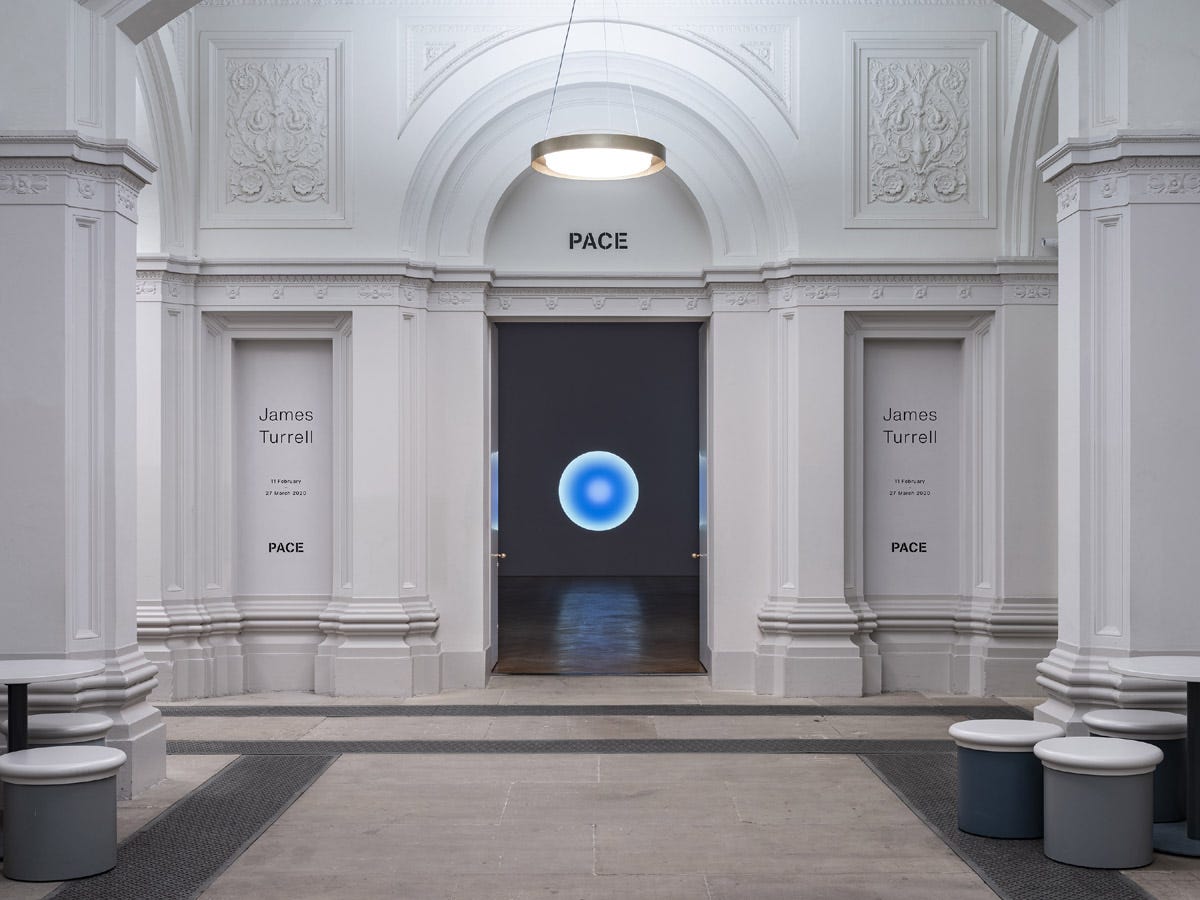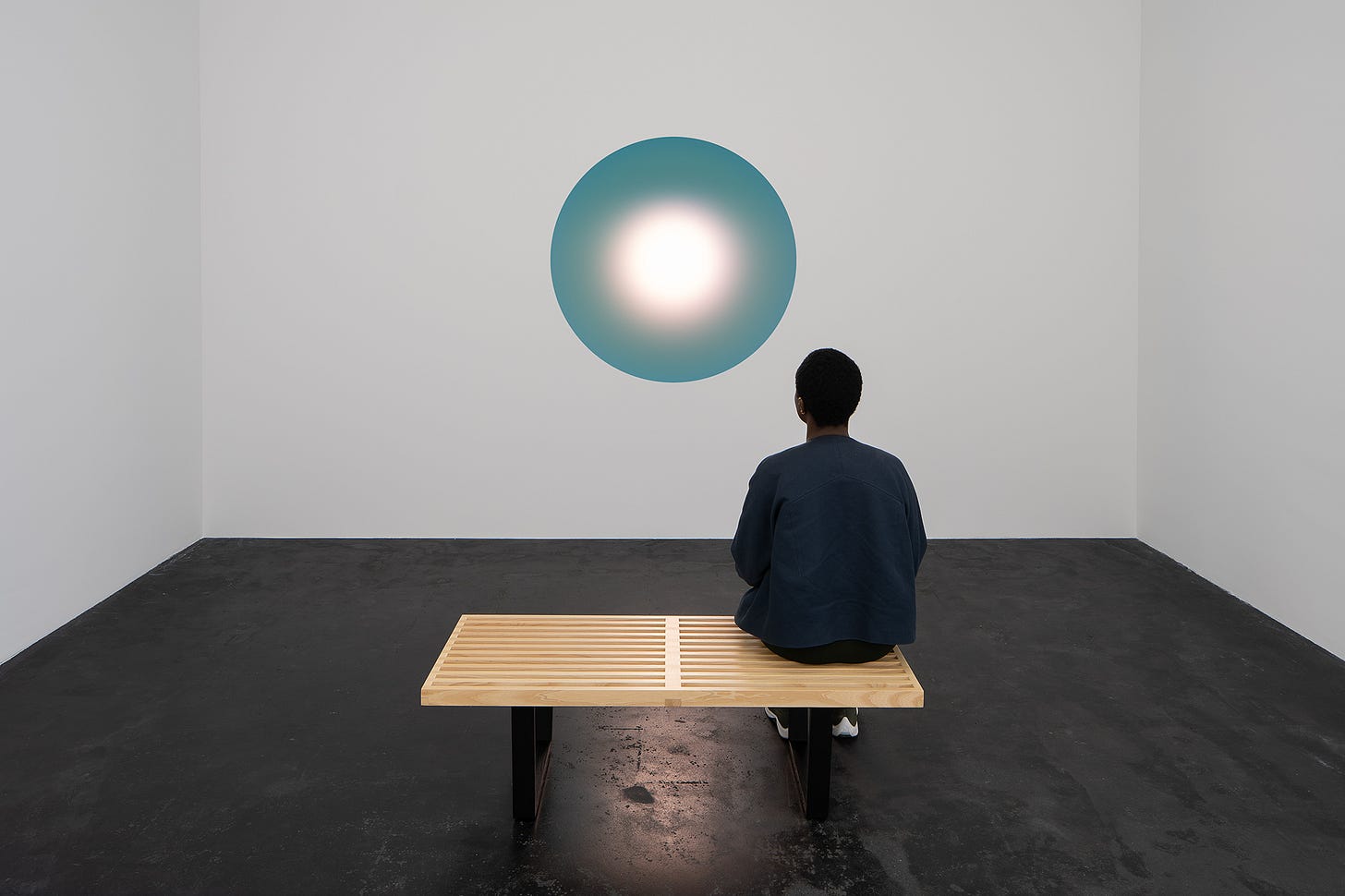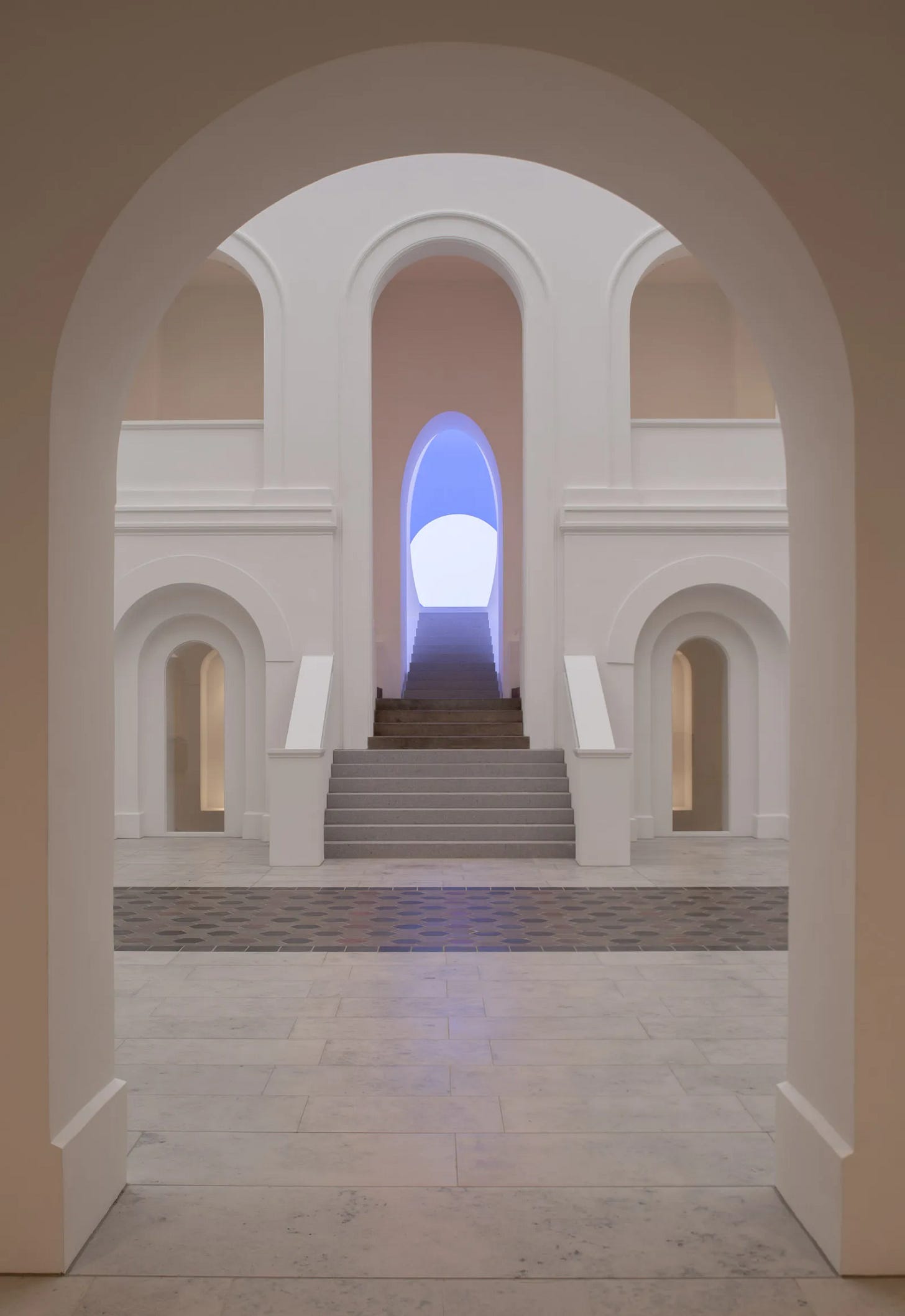"Who looks outside, dreams; who looks inside, awakes."
Carl Jung
Last week, we began exploring “felt sense” - the art of tuning into our own inner guidance. If you haven’t had a chance to read the first part, I’d suggest starting there, as today we’ll be discussing common challenges and looking at a few further guidelines to deepen the practice.
To review briefly, felt sense is the subtle, wordless awareness that arises in our bodies in response to certain situations or problems. It’s the quiet, often vague sense of something important but not yet clear. Imagine it as intuiting the outline of an idea before it fully takes shape - a way in which your inner self speaks before the message reaches articulate definition.
Naturally, this kind of awareness can be difficult to connect with at first. It emerges gradually and asks us to listen in a new way. Above all, it requires us to set aside our expectations and welcome whatever comes up with openness and a spirit of curiosity - a practice that’s easier said than done.
As you read on, remember that the best approach is a friendly one. Inner listening is a journey of discovery rather than achievement. It’s a shy, timid teacher that gains confidence the more you trust it and allow it guide you.
Constellations, Pace Gallery, James Turrell 2019
Felt Sense, Part 2
Why Try Felt Sense?
What Felt Sense Is Not
Searching vs Receiving
If You Can’t Find It
Unlocking the Shift
Restlessness & Imagery
Afterword: Closing Thoughts
Why Try Felt Sense?
It may be useful to begin by restating why this practice deserves our attention. Felt sense isn’t just an accessory tool; it’s a therapeutic opening - a way to connect with the elusive corners of our experience and find small but significant moments of clarity and relief.
I don’t know if this sounds familiar, but I sometimes catch myself thinking: if I could just clear the weekend for reflection, book a four-hour session with a talented therapist, or hike through Nepal for a week... then, there, I’ll finally figure out what I need to do to “fix” things. It’s taken me a long time (and a fair amount of frustration) to recognize that this isn’t how our minds and bodies work.
Our best insights don’t arrive all at once; they come in little blips and suggestive signals. But if we’re patient and attentive enough to catch a few of them, over time, a pattern emerges and a path begins to take shape. It’s a humbling truth, but also a comforting one: even a spoonful of clarity can loosen up our anxiety and help us reclaim a sense of peace and direction.
Felt sense is that spoonful of clarity. It’s an act of self-discovery and self-healing, a way of finding what’s blocking the flow from the well within.
Skyspace, Lech am Arlberg, Austria, James Turrell 2018
What Felt Sense Is Not
One of the most common difficulties for those new to inner guidance is confusion over what felt sense is actually meant to be. With so much literature surrounding “embodied wisdom,” it’s easy to unintentionally absorb a few misconceptions. Let’s take a moment to clear these up.
Felt sense isn’t talking at yourself. If you’re like everybody else, you know what might be wrong in your life: “It’s my parents” or “I lack courage, that’s me.” Felt sense doesn’t work like that. Instead of approaching yourself with old judgments and recurring thought-loops, you’re listening for something new. You’re turning inward and asking, “What’s actually wrong here?” - and then patiently waiting for your body’s response, free from routine, cerebral and quick-fix answers.
Felt sense isn’t analysis. It’s fairly easy (and even fun sometimes) to rationalize our problems: “The reason I’m alone must be because…” But that kind of thinking often keeps us stuck, reinforcing fixed ideas about who we are. Felt sense is dynamic and optimistic; it’s based on the view of people as a process, capable of continual change and forward movement. When you’re listening correctly, you’re connecting to the whole of the situation, which often reveals itself to be rooted in something deeper than the usual surface considerations.
Felt sense isn’t about “gut feelings.” We all have emotions that come up repeatedly around certain problems - feelings that, while recognizable, don’t help us get unstuck. A good sign that you’re connecting to a felt sense is that it feels unfamiliar - wider and less defined. Again, it’s how your body holds the whole issue at once, and to let it form, you have to step back from familiar feelings and listen openly. The words that come to name this quality will likely feel fresh and revealing, capturing a new essence and pointing you toward further exploration.
“To quote the old sage, a question ain’t a question if you know the answer.”1
Confidences, Gagosian, James Turrell 2003
Searching vs Receiving
Another common challenge in connecting with felt sense is the mixup between searching and receiving.
Searching is what we do when we’re desperately seeking answers - like when we’re unsure about a relationship or a career path, and we endlessly weigh every pro and con. It feels tense and carries an undercurrent of impatience, as though the answer is something we need to hunt down and wrestle into clarity.
Receiving is entirely different. It feels like sinking into a hot bath, free from the strain of serious reflection. As the warmth and steam envelop you, the mind and body soften; they’re no longer on guard and therefore able to think and feel freely. In that calm, insights appear - soft, unbidden, as if they had been waiting for you to relax.
This distinction matters. Often, we assume that felt sense requires relentless searching, but the act of searching creates its own barriers. When we shift into a state of receiving, we make room for answers to emerge on their own. What we need finds us effortlessly.
If You Can’t Find It
It’s completely normal to feel uncertain about whether you’re “getting” felt sense or not. Many of us are used to knowing exactly what to think and feel, so when this strange, unformed awareness doesn’t immediately present itself, it’s easy to feel like we’re missing something.
Listening is at once richly nuanced and surprisingly straightforward. It’s mental, kinesthetic, and a little mysterious, but there’s no reason to overthink it. Consider it like trying to remember what you were about to say: that inner probing for the forgotten idea - that bodily searching - is an informal version of felt sense. The key is to stay with it until it opens up a little.
Here’s an easy way to practice getting into a felt sense:
Silently, to yourself, pick something you love or find beautiful. It could be an object, a place, or anything that feels special to you. Spend a minute or two thinking about it.
Ask yourself, “Why do I love this, or why do I think it's beautiful?”
Let yourself feel the whole sense of its specialness. See if you can find one or two words that get close to what makes it meaningful.
Now return to the feeling behind those words - to the whole of it - and notice if new words or impressions come up.
This exercise helps you experience what it’s like attending to a felt sense, something large and definitely known, but that you’re not immediately able to verbalize. Notice how little of your love-feeling the words actually say. And yet, if they fit, the words are somehow right in relation to the whole.
Here are a few further tips that can help:
Give It Time: Felt sense isn’t something to “make happen.” It doesn’t respond well to pressure. Gently ask yourself what you’re feeling about the whole thing, and then allow time and silence to do its work.
Look in the Right Place: Felt sense arises in the body, not in thoughts. If you catch yourself thinking too much, guide your attention back to the physical feeling. Let the mind step back while the body takes the lead.
Stay Open to the Unknown: Felt sense might feel hazy and strange, like catching a glimpse of something through a veil. That’s exactly where you want to be. Rather than searching for something familiar, you’re allowing yourself to look in a new space.
Take it slow, and let your felt sense form in its own time. This isn’t a test of precision or correctness; it’s about noticing and being receptive enough to welcome whatever your inner self wants to reveal.
The Circular Glass, Häusler Contemporary, James Turrell 2020
Unlocking the Shift
When you do connect with a felt sense but can’t then seem to move it, the issue might be that you haven’t yet found the right question to ask. Felt sense often responds to open-ended questions, but phrasing matters - what works in one session might fall flat in another.
The key is to experiment and try different approaches until something resonates and stirs a shift. Here are some questions that often prove effective:
“What is this, really?”
“What’s the core of it?”
“What’s the worst of it?”
“What trouble’s me the most?”
“What’s at the center?”
“What’s underneath?”
“What needs to happen with this?”
“What would it take to feel better?"
Notice that there are two basic kinds of questions you can ask: the kind that explore what's wrong, and the kind that explore what would make it right. Another way to say this is: we can ask ourselves what the problem has been, or we can ask ourselves what needs to happen but hasn't yet.
It’s important to work your way toward the forward-focused questions, to understand what’s troubling you and what you need to do to move beyond it. These “life-forward” questions invite progress, helping the felt sense point you toward growth and change rather than dwelling solely on the past.
Constellations, Pace Gallery, James Turrell 2019
Restlessness & Imagery
Restlessness is, for me, the greatest enemy of introspection. Unless the timing feels particularly serene - say, just before the day begins or as it softly concludes - my mind is often too jumpy to settle into itself.
When that happens, there’s an approach I turn to and rely on: visualization. You don’t need to be especially creative or “visual” to benefit from it. By summoning even a modest picture, you can open a new pathway to felt sense and explore what’s stirring beneath it.
Try this: Imagine lighting a candle in a dark room. See the strike of the match, the warm glow as the flame catches, and the light slowly filling the space around it. Even now, as you’re reading, you can likely bring this to mind with surprising clarity and ease.
In that same way, when you connect to the felt sense, invite an image of your feeling to take shape. It might come as a setting - a misty forest, a stormy sky, the edge of a canyon (with no way across) - or a scene - yourself standing at a crossroads, locked behind a gate, reaching out to something undefined...
Once the image forms, pause and notice its effect on you. Check its emotional resonance. Ask yourself: “What does this image make me feel?” Simply seeing the image can create a small shift. Even if it doesn’t, the process often invites a fresh step forward, some small opening that nudges you toward a new understanding.
Afterword: Closing Thoughts
As we close this mini-series on inner guidance, I want to ask you, one final time, to resist the urge to analyze, infer, or “figure things out” too quickly. Felt sense is not a race to answers; it’s a patient, deliberate practice that unfolds over time.
So often, we think we already know what’s wrong. We push ourselves in endless directions, following ideals and expectations of who and what we should be. Rarely do we stop and ask, “How do I truly feel about this?” or “What does my body have to say about it?”
Even in the midst of this practice, that old habit can sneak in. You might connect with a felt sense, touch its core, and feel a moment of clarity - only to then hear yourself think, “Ah, I know what this is. It must be…”
The moment you hear that voice, stop. It’s not revealing anything new; it’s simply recycling old patterns. Instead, shift into an asking attitude. Tell yourself nothing. Ask, wait, and let your body respond.
The more you practice, the easier this will become. Felt sense will grow into something fluid and intuitive - an effortless rhythm woven into daily life. Soon, you’ll turn to it not just in times of stress and disarray, but as a trusted companion for navigating life’s little forks and quiet complexities.
In a word: Trust your body’s wisdom. Let it show you the way home.
A Chapel for Luke, Diözesanmuseum Freising Museum, James Turrell 2024
The Schopenhauer Cure, Irvin Yalom








